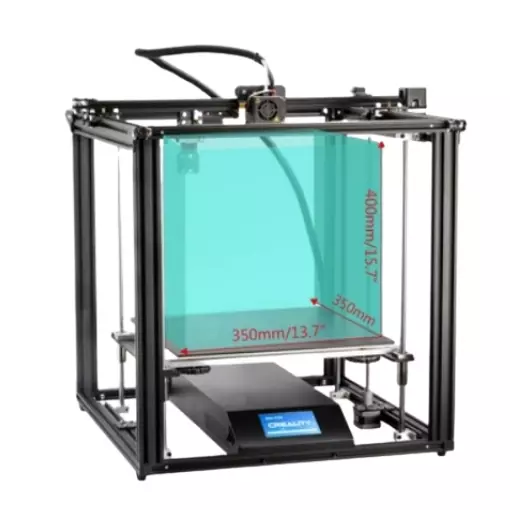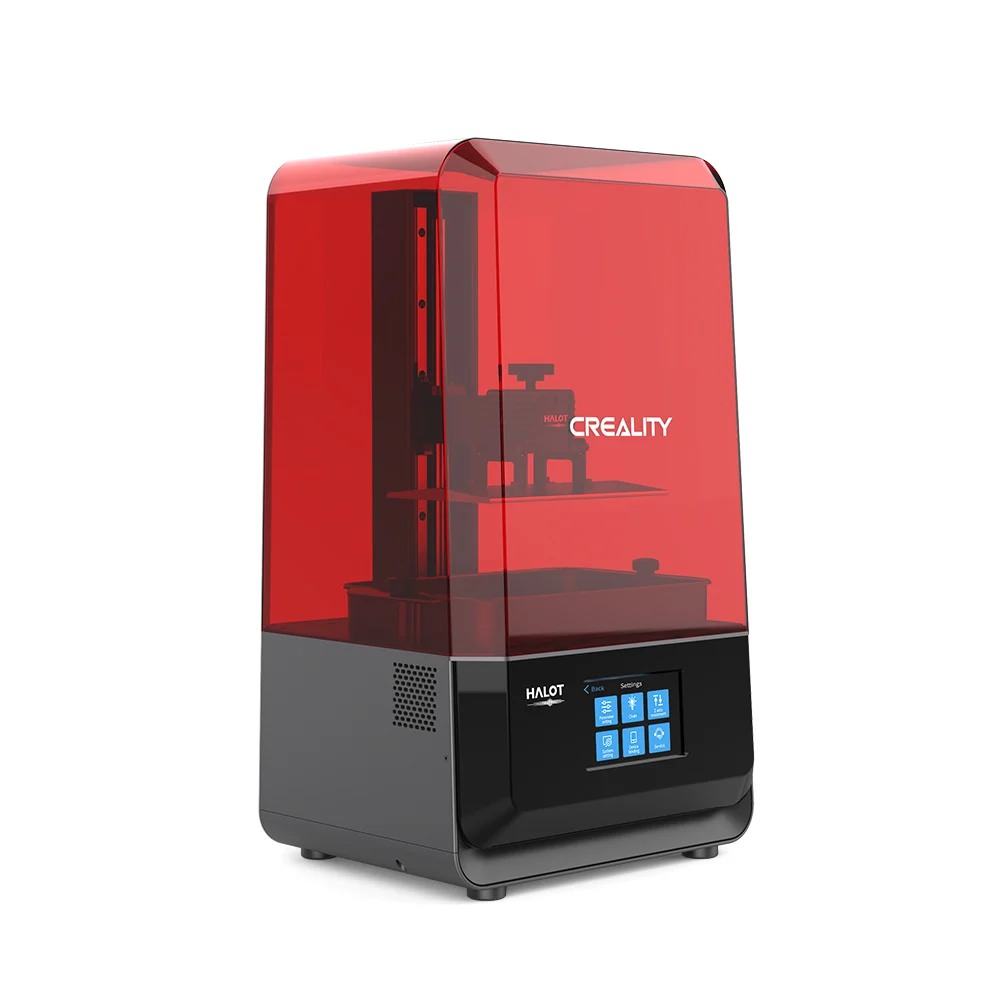Compare Ender 5 Plus vs Ender 3 S1 vs Halot Lite
Comparison between the best 3D printers
Choose the best 3D printer at the best price. The cheapest 3D printers are here.
Buy a 3D printer here with 3D Fila.
 |
 |
 |
|
| Model | Ender 5 Plus[BUY Ender 5 Plus] |
Ender 3 S1[BUY Ender 3 S1] |
Halot Lite |
| Printing Material | Filament | Filament | Resin |
| Estimated price | $599,00 | $399,00 | $400,00 |
| Fabricante | Creality 3D | Creality 3D | Creality 3D |
| Release Year | 2019 | 2021 | 2021 |
| Print Volume [mm] | 350x350x400 | 220x220x270 | 192x120x200 |
| Printer Size [mm] | 632x619x666 | 455x490x625 | 330x301x572 |
| Weight [kg] | 18,2 | 9,1 | 10,6 |
| Power Loss Recovery | YES | YES | NO |
| Maximum Resolution [mm] | 0,1 | 0,05 | 0,01 |
| Processor | 32 bits | ||
| Display | Touchscreen TFT 4,3'' | Display 4,3'' | Display touchscreen 5'' |
| Power Supply | 24V / 504W | ||
| Connectivity | SD / USB | SD / USB | SD / USB |
| Operating systems | Windows, Mac, Linux | Windows, Mac, Linux | Windows, Mac, Linux |
| Date of registration in the system | 2021-04-14 | 2023-03-28 | 2022-11-04 |
| Release date | 2019 | 2021 | 2021 |
| Extra features | The Ender 5 Plus offers a large print volume (350x350x400 mm) and fast assembly. It includes a BLTouch sensor, but with range limitations. It stands out for its dimensional accuracy, although it requires adjustments to the slicer settings. Despite the noise, its integrated design saves space, and includes features such as a filament sensor and power resumption. Ideal for large projects, it requires refinement in the settings for high-quality prints. | The Creality Ender 3 S1 printer stands out for its easy assembly and quiet operation. It has automatic bed leveling and a direct drive system, providing high-quality prints. The design is sleek, with flat cables in mesh sleeves and a magnetic bed. The Creality Sprite extruder is lightweight and developed in-house, supporting a maximum nozzle temperature of 260 degrees. It includes a filament run-out sensor and power loss recovery, with a dual Z-axis for greater support and stability. The build plate is flexible steel with PC coating, and the printer supports a wide variety of filaments. | Crealitys Halot Lite printer stands out in the mid-size resin 3D printing segment, with a build volume of 192 x 120 x 200 mm and 50 micron resolution. It offers a monochrome LCD for fast and durable printing, and an upgraded light source that ensures over 80% uniformity across the print bed. It includes Wi-Fi connectivity for remote control and updates, an ARM Cortex CPU for efficient performance, and is compatible with Halot Box and Lychee slicing software. It also has an activated carbon filter to reduce odors. |
| Support for multiple colors and materials (AMS and CFS) | NO | NO | NO |
Notes * |
|||
| Cost-benefit | 6 / 10 | 7 / 10 | 8 / 10 |
| Hardware | 2 / 10 | 2.4 / 10 | 1.2 / 10 |
| Screen | . | . | . |
| Print volume | 4 / 10 | 3 / 10 | 3 / 10 |
| Performance | 1 / 10 | 1 / 10 | 9 / 10 |
| [BUY Ender 5 Plus] | [BUY Ender 3 S1] |
Conclusion |
| In summary, the comparison among the Ender 5 Plus, Ender 3 S1, and Halot Lite 3D printers highlights distinct strengths and weaknesses tailored to different user needs and preferences. **Ender 5 Plus:** This model excels with its large print volume, making it suitable for larger projects and offering dimensional accuracy. However, it requires some adjustments for optimal performance and may not be the quietest option. With a heavier and bulkier design, it offers a range of advanced features such as a BLTouch sensor and power recovery, though its cost-benefit rating is relatively moderate. **Ender 3 S1:** Known for its ease of assembly and quiet operation, the Ender 3 S1 is a strong contender for those prioritizing user-friendliness without sacrificing print quality. It offers a well-rounded experience with features like automatic bed leveling and a versatile design, all at a competitive price point. Its performance remains solid, making it a great choice for hobbyists and those new to 3D printing. **Halot Lite:** This printer stands out in the resin printing segment, offering high-resolution capabilities and innovative features like Wi-Fi connectivity. Its monochrome LCD enhances printing speed and quality, making it ideal for detailed projects. However, its smaller print volume and hardware limitations may deter users looking for larger-scale operations. Ultimately, if large-scale FDM printing is prioritized, the Ender 5 Plus is a strong pick despite its heavier setup. For users seeking a balance of print quality and ease-of-use, the Ender 3 S1 is an attractive option. Meanwhile, the Halot Lite is best for users looking for high-detail resin printing, although its limited print size may not cater to everyone’s needs. In choosing the best printer, individuals should consider their specific requirements, budget considerations, and desired print volume. |

